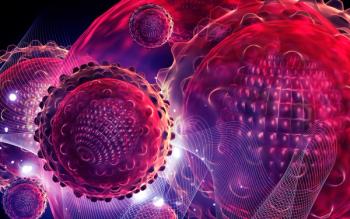
Oncology NEWS International
- Oncology NEWS International Vol 5 No 9
- Volume 5
- Issue 9
Community Activities Help Some Smokers Quit
BETHESDA, Md--A smoking-cessation study involving 11 pairs of communities and more than 20,000 smokers found a slight advantage for intervention among light-to-moderate smokers but no statistically significant difference among heavy smokers.
BETHESDA, Md--A smoking-cessation study involving 11 pairs ofcommunities and more than 20,000 smokers found a slight advantagefor intervention among light-to-moderate smokers but no statisticallysignificant difference among heavy smokers.
Sylvan B. Green, MD, senior investigator in the Clinical and DiagnosticTrials Section of the NCI's Division of Cancer Prevention andControl, said the mean quit rate for light-to-moderate smokerswas 30.6% in communities where intervention programs were conductedand 27.5% in comparison communities. For heavy smokers, the rateswere 18.0% and 18.7%, respectively.
Speaking at a symposium on tobacco addiction sponsored by theNCI and the American Society of Clinical Oncology (ASCO), Dr.Green called the difference for light-to-moderate smokers "notas large as many of us would have hoped for, but we believe thatit is real." He noted that the findings would be of publichealth importance "if you could actually get an additional3% of light-to-moderate smokers to quit and stay off."
Dr. Green termed the results for heavy smokers "disappointing,"but noted that these were the smokers more likely to have problemswith addiction.
The Study Design
The 22 North American communities in the Community InterventionTrial for Smoking Cessation (COMMIT) were cities of 50,000 to250,000 population, matched by geographic location, size, andsociodemographic factors, Dr. Green said. The matched communitieswere randomly assigned either to conduct a set of community-basedintervention programs or to serve as a comparison community withoutsuch additional programs.
The study began in 1988 with a baseline survey of the 22 communitiesand the identification of cohorts of smokers--10,019 "heavy"smokers (25 or more cigarettes a day) and 10,328 "light-to-moderate"smokers--who were followed over time, Dr. Green said. Active interventionto influence smokers to quit took place from 1989 through 1992,with final outcome data collected in 1993.
In addition to community mobilization, the principal "interventionchannels" were media and public education, health care providers,worksite and other community organizations, and "cessationresources," Dr. Green said. The goal of the cessation resourceschannel was to increase awareness of available smoking cessationservices and assistance, and to promote participation in communitycessation programs.
People in intervention communities were more aware of "anti-smokingevents and contests," he said. "The heavy and light-to-moderatesmokers were equally aware of what was going on in their communities,but the greater awareness in intervention communities seemed toaffect behavior only among the light-to-moderate smokers."
Articles in this issue
about 29 years ago
Multimodality Approaches Used in Esophageal Cancerabout 29 years ago
Talking With Your Doctor About Cancer and Its Therapyabout 29 years ago
Guttman Institute Reopens With Expanded Screening Servicesabout 29 years ago
Weight Gain, Not Fat Intake, Increases Breast Cancer Riskabout 29 years ago
Knowing When to Bow Out Gracefullyabout 29 years ago
Chemo Appears Not To Raise Birth Defect Risk in Offspringabout 29 years ago
Discovery of HIV-1 Protein Structure Could Lead to New Therapiesabout 29 years ago
'Friends of Cancer Research' Will Lead New Public Education Campaignabout 29 years ago
Cost of the New HIV Therapies Creates a Doctor's DilemmaNewsletter
Stay up to date on recent advances in the multidisciplinary approach to cancer.


















































































